The name “rickshaw” is primarily an anglicized form of the Japanese word for the human-powered vehicle. Rickshaws can also be called jinrikisha. Expect to see rickshaw drivers providing their services in famous tourist spots in Tokyo with a traditional Japanese ambiance. Rickshaw drivers congregate in Tokyo’s ancient neighborhood of Asakusa.
Continue reading to learn more about taking a rickshaw ride in Tokyo, including what to anticipate, where to locate them, and why travelers choose to do so.
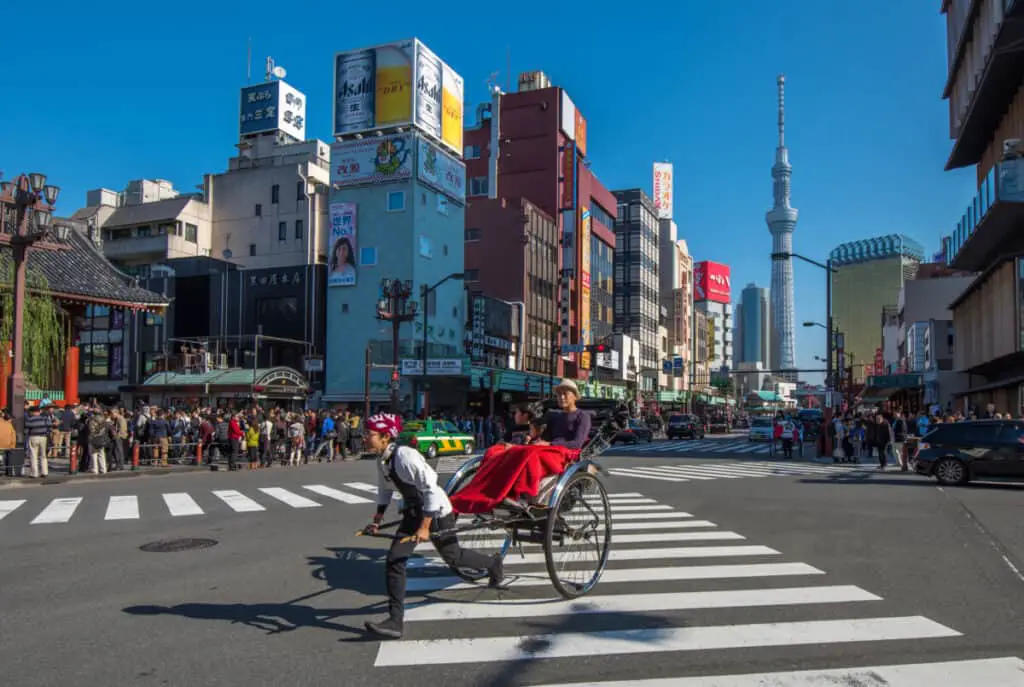
What is a Rickshaw Ride?
Rickshaws, also known as jinrikisha or jinrickshaws, are two-wheeled vehicles with a doorless, chairlike body with a folding top that may carry one or two passengers and is pulled by a man between two shafts. In 1879, the first known usage of a rickshaw was documented.
With a few exceptions for their use in tourism, bike rickshaws, auto-rickshaws, and electric rickshaws have gradually supplanted the old pulled rickshaws.

In the nineteenth century, pulled rickshaws were a standard mode of transportation and a source of work for male laborers in Asian towns and cities.
Their appearance was linked to their newfound understanding of ball-bearing systems. As cars, railroads, and other modes of transportation became more widely available, their popularity waned.
Why are Rickshaw Rides Popular Among Japanese Tourists?
Climb on a traditional Japanese rickshaw for a breathtaking perspective of Tokyo’s Asakusa area. Your experienced guide will take you to some of Tokyo’s most recognizable locations, neighborhoods, temples, and shrines, all while explaining the history behind them.
Views of maple and cherry trees, gardens, soaring buildings, and historic shops are available. This is the way to visit Tokyo if you want to be carefree and customize your experience.

What Are the Different Types of Rickshaws?
A Pulled Rickshaw
A drawn rickshaw is a human-powered method of transportation in which a runner pulls a two-wheeled cart with seating for one or two persons. These pulled rickshaws are the more traditional way to experience a rickshaw ride in Tokyo.
Many nations have recently discouraged or forbidden the usage of human-powered rickshaws due to concerns about the safety of rickshaw drivers. Cycle rickshaws and auto rickshaws have mostly replaced human pulled rickshaws.
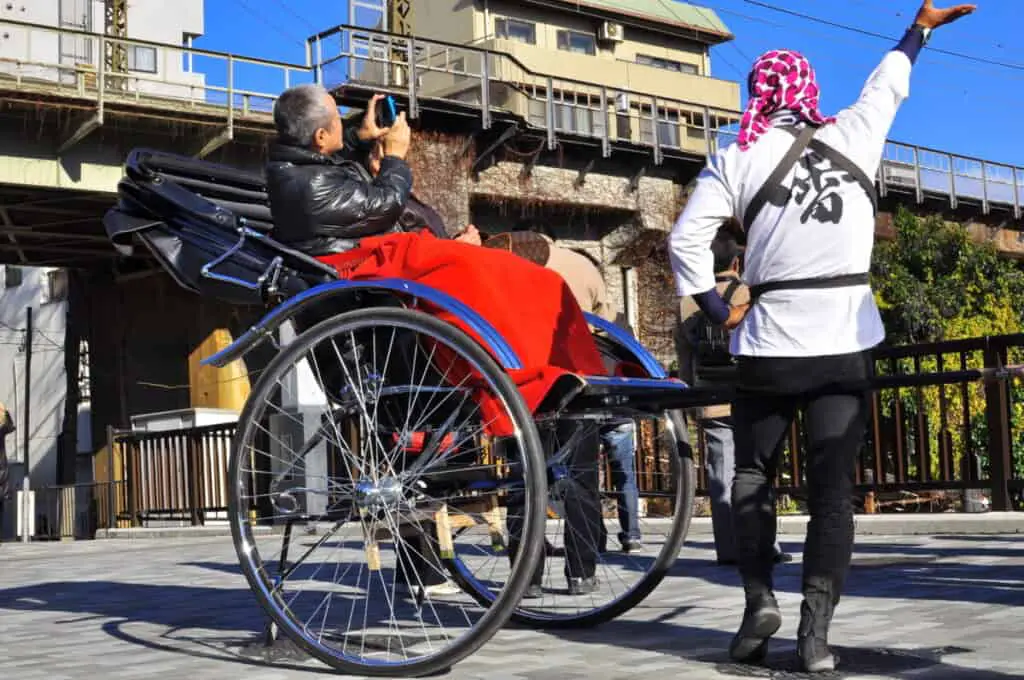
A Cycle Rickshaw
A cycle rickshaw is a small-scale model of local transportation. It is a form of hatchback tricycle that is used to transport passengers for a fee.
Bike taxi, velotaxi, pedicab, bike cab, and hatchback bike are some of the various names for a cycle rickshaw.
Unlike rickshaws pulled by a person on foot, cycle rickshaws are propelled by a bicycle connected to the rickshaw.
Auto Rickshaw’s
A motorized variation of a cycle or pulled rickshaw is an auto-rickshaw. The majority of auto-rickshaws contain three wheels and will not tilt when they move.
In many nations across the world, auto-rickshaws have become a widespread mode of urban transportation, both for rental and personal use.
They are particularly popular in nations with subtropical or tropical conditions, as they are seldom entirely enclosed.
Auto rickshaws are available in a range of styles and sizes. The most typical design is a sheet-metal body or open-frame on three wheels, a tiny driver’s cabin in the front, and a canvas canopy with drop-down side curtains.
Another common type of auto-rickshaw is a motorcycle with an extended sidecar or, less commonly, pushing or dragging a passenger compartment.
An Electric Rickshaw
Electric rickshaws have continued to gain increasing popularity in several countries, including Japan, as a low-cost alternative to auto rickshaws and pulled rickshaws since 2008. They require less human effort than pulled rickshaws.
Electric Rickshaws are three-wheeled vehicles with electric motors that range from 650 to 1400 Watts. They are primarily produced in India and China.
According to experts, if adopted systematically, battery-powered rickshaws might be a low-emitter supplementary mode of transportation for low-income individuals who suffer the most from a lack of transportation.
What Can You Expect on a Tokyo Rickshaw Ride?
There is no need to book a reservation for a rickshaw excursion ahead of time. You may simply approach a driver and request a tour.
However, if you intend to take a lengthy journey, you need to make a reservation. When making your reservation, some firms even give you the option of personalizing your pick-up place, but only inside Asakusa.
Depending on the rickshaw operator’s plans, a rickshaw trip might last as little as 10 minutes or as long as three hours. Ten to fifteen minutes should be plenty of time to go around a block, while 30 minutes should be plenty for a short tour of the neighborhood.
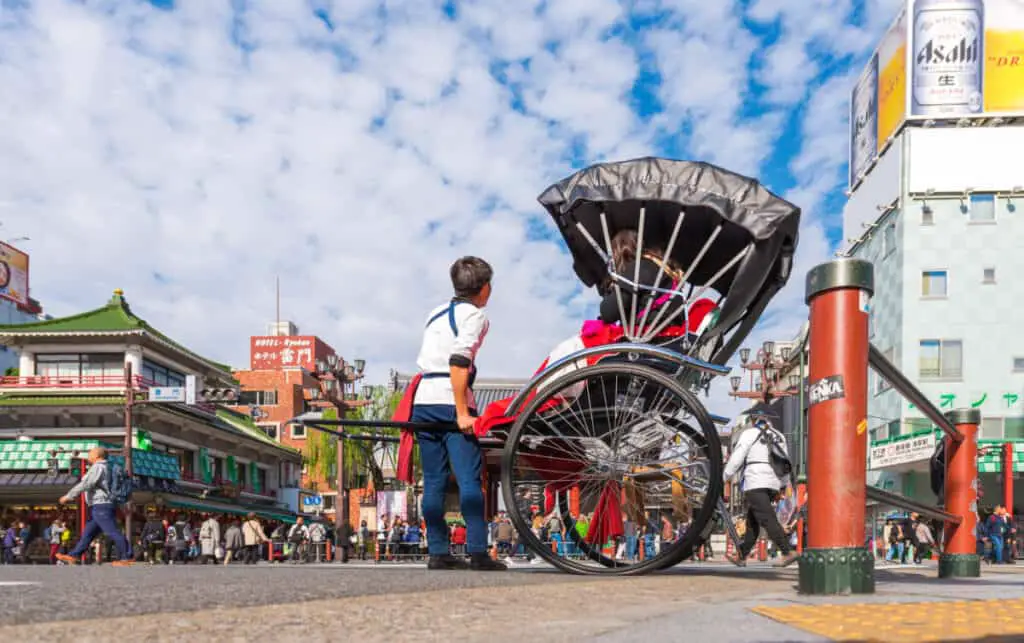
A rickshaw can only seat two individuals of average build. Therefore, a big party will be divided among many rickshaws. Discounts are usually available for people traveling in pairs or groups.
Can Children Take a Rickshaw Ride in Tokyo?
It should be noted that many operators do not charge for children under the age of six who may sit on a parent’s lap. Rickshaw drivers are usually able to accommodate wheelchair users as well, although it’s important to ask ahead of time.
Will Weather Effect My Rickshaw Ride in Tokyo?
Don’t be concerned about light rain or snow. Rickshaws feature waterproof coverings to keep you dry.
You can ride with your baggage, but if your luggage is too large, you may be required to leave it at the operator’s office.
Why Should You Ride a Rickshaw Around Asakusa?
Asakusa was the Edo period’s ‘downtown,’ and it has preserved its traditional flavor to this day.
While modern Tokyo monuments such as the Asahi Beer Hall and Tokyo Skytree may be seen here, the Edo era charm still permeates the area. It also hosts some fantastic events, like the Asakusa Sanja Matsuri, which takes place in May.
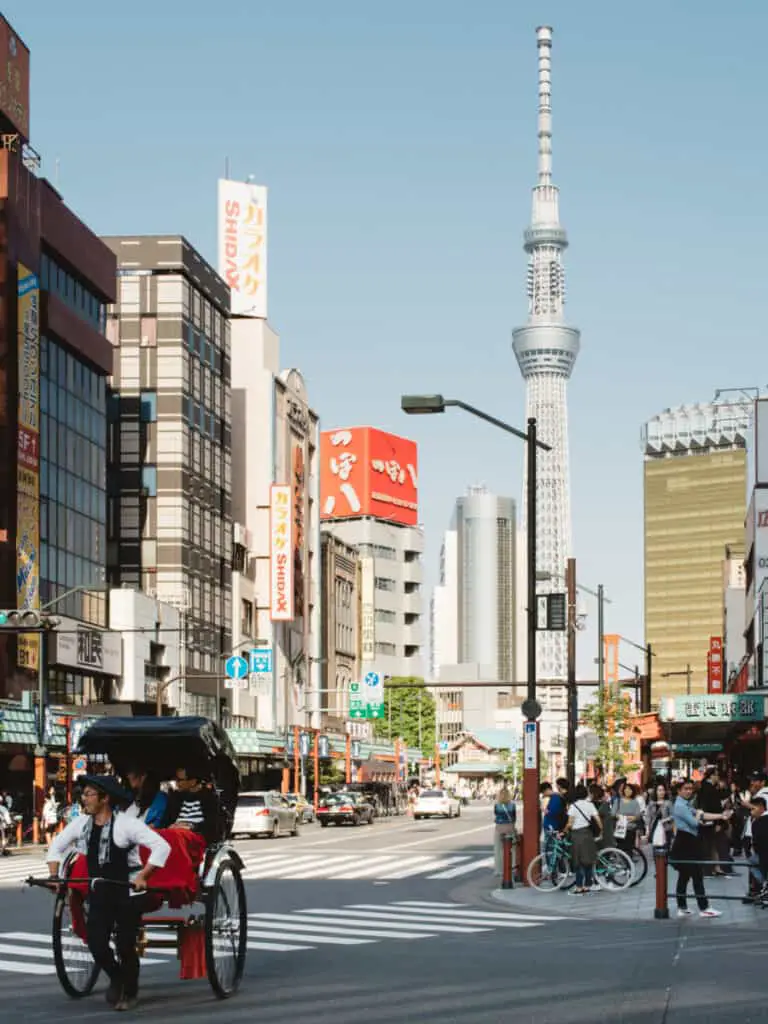
Asakusa has Numerous Interesting Attractions
During your rickshaw ride through Tokyo, you’ll pass by Kamiya Bar, Tokyo’s oldest western-style bar, the kabuki theatre district, and a shop specializing in traditional Japanese clothes and festival wear.
Finding Japan’s Robin Hoods and Exploring Old Tokyo
Your rickshaw driver should have pointed out what seems to be a ninja scaling a building as you passed around a corner onto one of the more old-fashioned-looking streets.
These aren’t real ninjas but sculptures of a gang of renowned skilled thieves.
There are five in total. Legend has it that the five robbers, Shiranami Gonin Otoko, stole from wealthy feudal lords. However, local mythology claims that these robbers were good, as a Japanese Robin Hood.
Taking a Traditional Rickshaw Tour in Asakusa
Tourists may find hundreds of rickshaws near the station that are available throughout the day and do not require a reservation.
If you want to prepare yourself for your rickshaw ride ahead of time, the Kosugiya website provides English language help, making it quite simple to book a reservation.
A 20-minute rickshaw ride costs approximately 4000 yen for a single passenger, 6000 yen for a two-person trip, and 9000 yen for a three-passenger journey.
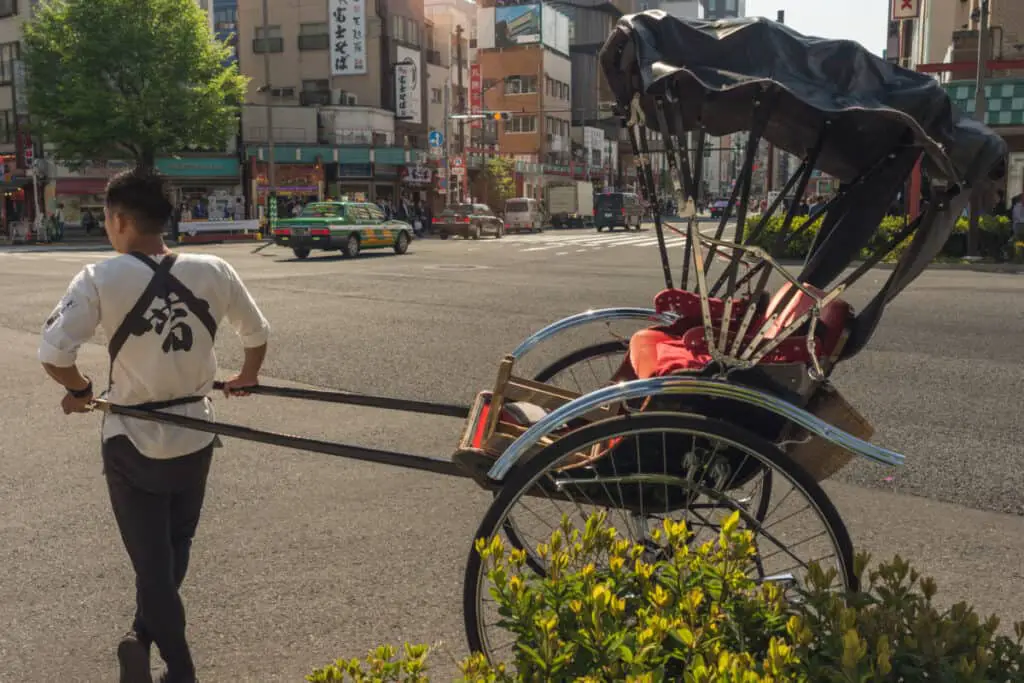
Popular Rickshaw Operators in Asakusa
Jidaiya Rickshaw Tours
Jidaiya, Asakusa’s oldest rickshaw company, promises to give unforgettable, once-in-a-lifetime experiences. It includes an air-conditioned waiting area outside Sensoji Temple’s Kaminarimon Gate.
Jidaiya also offers gifts to all clients, including postcards for short tours and more excellent goodies for longer, more expensive tours.
Jidaiya also provides a variety of other cultural activities that you may combine with your rickshaw trip for an extra charge.
Kimono-wearing is one suggested activity. After all, if you’re going to travel the old-fashioned manner, you may as well dress the part.
Kurumaya Rickshaw Tours
Kurumaya is somewhat less expensive than its competitors, and it offers two suggested courses: a 30-minute regular course and a 60-minute introductory course.
The latter will provide you with a thorough understanding of Asakusa’s past, making it an excellent choice for history enthusiasts.
Kosugiya Rickshaw Tours
Kosugiya, like Jidaiya, provides cultural experiences such as kimono-wearing, calligraphy, and origami. For excursions lasting longer than 10 minutes, reservations are advised.
Kosugiya Rickshaw Tours Official Website
Ebisuya Rickshaw Tours
Riding in a traditional Japanese rickshaw with Ebisuya is Japan’s most popular tourist attraction. Unlike a cab or a bus, a rickshaw allows you to see all of the fantastic hidden gems and explore like a native.
Ebisuya Rickshaw Tours Official Website
Ebisuya’s drivers, dress in traditional Japanese garbs, while they take you on an exciting tour where you will learn about fantastic restaurants as well as the town’s culture and history. It’s time to venture beyond the bounds of the guidebook. If you’re in Japan, you must take an Ebisuya Rickshaw tour.










